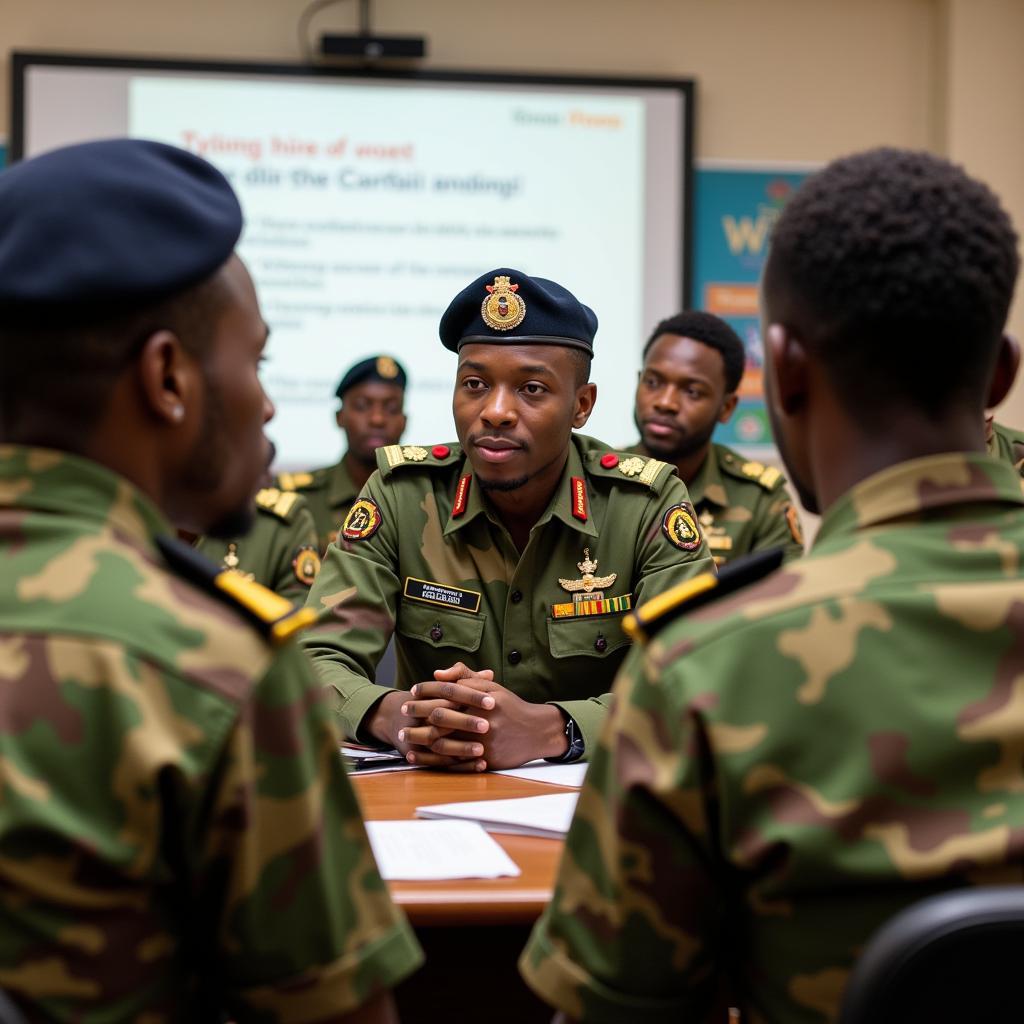The Haunting Power of the African Child and Vulture Photo
The iconic and disturbing “African Child And Vulture Photo” taken by Kevin Carter in 1993 continues to spark debate and raise questions about journalistic ethics, the role of photography in documenting suffering, and the complexities of famine relief in Africa. The image, depicting a young, emaciated Sudanese child struggling towards a food center while a vulture lurks nearby, became a symbol of the devastating famine in Sudan. It instantly captured global attention and forced a difficult conversation about the human cost of conflict and poverty. african child and vulture picture
Understanding the Context of the African Child Vulture Photo
To fully grasp the power and controversy surrounding this image, it’s crucial to understand the context in which it was taken. Southern Sudan was in the midst of a brutal civil war, exacerbated by a severe drought, leading to widespread famine. Aid workers, journalists, and photographers flocked to the region to document the crisis and bring international attention to the suffering. Carter’s photograph became a stark visual representation of this humanitarian disaster. The photograph forced the world to confront the harsh realities of famine and its impact on the most vulnerable.
The Controversy Surrounding Kevin Carter’s Photograph
While the “african child vulture photo” brought much-needed attention to the Sudanese famine, it also sparked a firestorm of criticism directed at Kevin Carter. Many questioned his decision to photograph the suffering child rather than intervening and assisting. This sparked a debate about the role of photojournalists: are they observers or participants? The ethical dilemma of documenting suffering versus providing aid became a central point of discussion. Some argued that the photograph exploited the child’s vulnerability, while others defended it as a necessary tool for raising awareness and prompting action.
The Photographer’s Perspective: Kevin Carter’s Struggles
It’s important to acknowledge the immense emotional toll that witnessing such suffering took on Kevin Carter. He was deeply affected by the scenes he witnessed in Sudan and struggled with depression and post-traumatic stress disorder. While he did chase the vulture away after taking the photograph, the image haunted him. Three months after winning the Pulitzer Prize for the photograph, he tragically took his own life. Carter’s story highlights the complexities of photojournalism and the emotional burden that comes with documenting human suffering.
The Legacy of the African Child and Vulture Picture
The african child picture vulture continues to be a powerful reminder of the human cost of conflict and poverty. It serves as a testament to the importance of humanitarian aid and the need for global action to address the root causes of famine. While the ethical debate surrounding the image persists, its impact on raising awareness about famine and its consequences is undeniable. The photograph continues to be used in educational settings and advocacy campaigns to highlight the devastating effects of hunger and the importance of providing aid to those in need. It serves as a stark reminder of the fragility of human life and the urgent need for compassion and action.
The Impact on Humanitarian Aid and Famine Relief
The international attention generated by the african child vulture photo led to increased humanitarian aid and famine relief efforts in Sudan. Numerous organizations mobilized resources to provide food, water, and medical assistance to those affected by the crisis. While the photograph captured a moment of profound suffering, it also sparked a wave of compassion and action that undoubtedly saved lives.
Conclusion: Remembering the Child and the Crisis
The “african child and vulture photo” remains a controversial yet undeniably powerful image. It reminds us of the importance of bearing witness to human suffering, even as it forces us to confront difficult ethical questions. While the debate about Kevin Carter’s actions continues, the photograph’s legacy lies in its ability to raise awareness and mobilize action against famine and poverty in Africa. It serves as a chilling reminder of the human cost of conflict and the urgent need for compassionate intervention.
FAQ
- Who took the “african child and vulture photo”? Kevin Carter.
- Where was the photo taken? Sudan.
- When was the photo taken? 1993.
- What prize did Kevin Carter win for the photo? The Pulitzer Prize.
- What happened to Kevin Carter after taking the photo? He struggled with depression and later took his own life.
- What was the impact of the photo? It raised awareness about the famine in Sudan and led to increased humanitarian aid.
- Why is the photo controversial? Some criticized Carter for not helping the child directly.
Need Help?
For further assistance or to learn more, please contact us: Phone: +255768904061, Email: kaka.mag@gmail.com or visit us at Mbarali DC Mawindi, Kangaga, Tanzania. Our customer service team is available 24/7.
More Information
You can find more information on related topics on our website. Explore articles on famine relief efforts in Africa, the ethics of photojournalism, and the impact of conflict on children. We encourage you to continue learning and engaging with these important issues.

